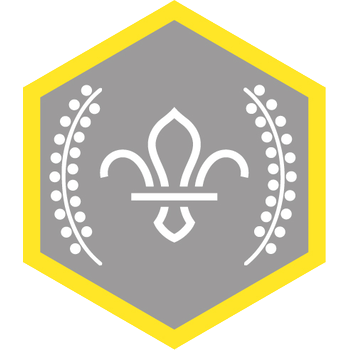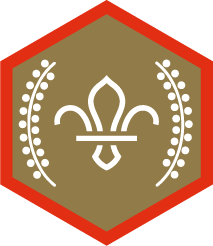
Overwhelming art
You’ll need
- Craft materials (for example, tissue paper, pipe cleaners, stickers)
- PVA glue
- Glue sticks
- Coloured pens or pencils
- Scissors
Before you begin
- Use the safety checklist to help you plan and risk assess your activity. Additional help to carry out your risk assessment, including examples can be found here. Don’t forget to make sure all young people and adults involved in the activity know how to take part safely.
- Make sure you’ll have enough adult helpers. You may need some parents and carers to help if you’re short on helpers.
Run the activity
- Hand out copies of 'The Big 5 Things' information sheet.
- Choose five readers to each read out one of the 'The Big 5 Things' from the factsheet.
- Explain that a shutdown or a meltdown is an intense response to an overwhelming situation. It happens when someone becomes completely overwhelmed by their current situation and temporarily loses control of their behaviour.
- Tell everyone that too much information, unexpected changes, sensory overloads, or feelings of being anxiety and confusion can cause autistic people to feel overwhelmed. This can cause them to have meltdowns and shutdowns.
- Explain that a meltdown or a shutdown may lead to a ‘flight, fight or freeze’ response. See if anyone knows what flight, fight or freeze may mean. Flight means someone may run away. Fight means shouting, screaming, crying, kicking, lashing out, biting. Freeze means being completely silent or unresponsive.
- Tell everyone that a meltdown or a shutdown's not the same as a temper tantrum. Then explain that if we see or know someone's having a meltdown or a shutdown, be patient and don’t judge or react negatively. Calmly ask if people are OK, then give them some time and space to recover.
Making art
- Ask the group to think about what might cause a ‘meltdown’ or a ‘shutdown’ and what it might feel like.
- The group should think about things they do every day, such as sitting in a classroom at school, and what these activities would be like for somebody has autism.
- Everyone should use the arts and crafts supplies to create a collage of things that might cause meltdowns and shutdowns.
- Bring the group back together to share their collages.
- People could explain why they included certain things in their collage, such as why they chose a certain colour or image.

This activity helps contribute towards some of the UN's Sustainable Development Goals. Find out more about the SDGs, and how Scouts across the world are getting involved.

Reflection
The group has seen some of the actions and environments that can cause a meltdown or shutdown. Find out what the group would do to help prevent this from happening. How should they react to a person who seems to be misbehaving, but who is actually just overwhelmed?
Autism is a ‘hidden disability,’ meaning that it can be difficult for others to spot when an autistic person’s behaviour is a result of someone or something that has made them uncomfortable. What could be done to educate people about hidden disabilities and create a friendlier world for everyone?
Safety
All activities must be safely managed. You must complete a thorough risk assessment and take appropriate steps to reduce risk. Use the safety checklist to help you plan and risk assess your activity. Always get approval for the activity, and have suitable supervision and an InTouch process.
- Scissors
Supervise young people appropriately when they’re using scissors. Store all sharp objects securely, out of the reach of young people.
- Glue and solvents
Always supervise young people appropriately when they’re using glue and solvent products. Make sure there’s plenty of ventilation. Be aware of any medical conditions that could be affected by glue or solvent use and make adjustments as needed.
Older or larger groups could use art and craft supplies and anything else they can find to create an environment that might cause somebody to become overwhelmed. This should include colours, sounds, smells and textiles that are likely to cause a meltdown or shutdown.
Be aware that this activity might be overwhelming for some members of your group. Speak to parents and carers before running this activity. Ensure you have a quiet space for anyone to go to if they'd like to take some time away from the activity.
All Scout activities should be inclusive and accessible.
The group could use their collages to create a list of house rules for an inclusive environment, such as the meeting space. The environment should have as few colours, sounds, smells and textiles that are likely to cause a meltdown or shutdown as possible.


